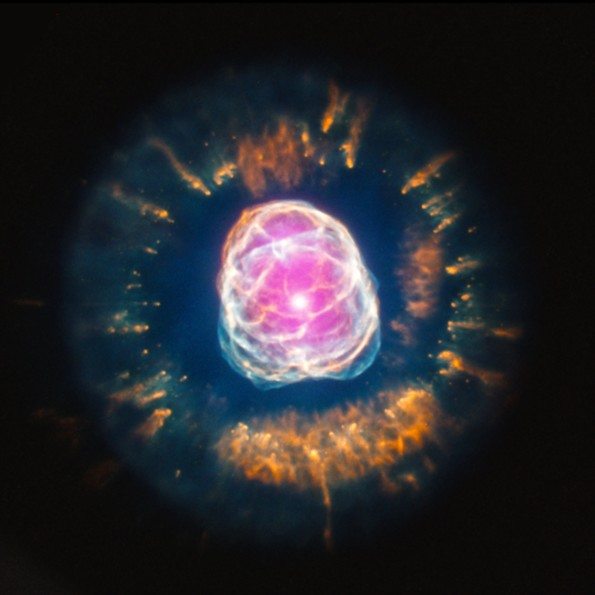Last Updated on 07/13/2013 by Chris Gampat
Image via NASA
This photo was recently captured by NASA astronomers and shows what the end of a star’s life looks like. Unlike humans, stars become super photogenic at the end of their life. This one in particular is named Eskimo Nebula. NASA states that this is a planetary nebula. Planetary Nebulas form when a star uses up all of the hydrogen in its core and begins to cool and expand. Because of the rapid expansion, the outer layers of the star are carried away by a thick 50,000 kilometer per hour wind–and therefore exposing a hot core.
NASA then states, “This hot core has a surface temperature of about 50,000 degrees Celsius, and is ejecting its outer layers in a much faster wind traveling six million kilometers per hour. The radiation from the hot star and the interaction of its fast wind with the slower wind creates the complex and filamentary shell of a planetary nebula. Eventually the remnant star will collapse to form a white dwarf star.”
Cool, huh?
Via NASA


